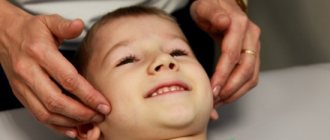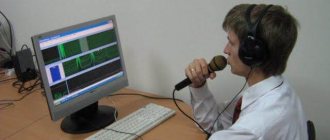What is stuttering?
First, let's figure out what it is and what provokes the development of stuttering. It is now a very popular opinion that stuttering is a genetically determined disorder. There is plenty of evidence for this; many scientists confirm this theory in the course of their research in this area. Other reasons (stress, poor socialization, etc.) can become a trigger factor only if there is a predisposition.
We all experience stress, various nervous shocks, suffer from many diseases, but at the same time we may not suffer from stuttering. This disorder develops on “fertile soil” caused by genetic disorders.
Stuttering is a typical neurological disorder that is psychogenic in nature. Accordingly, treatment of stuttering, both in adults and in children, should be aimed not only at correcting the functioning of the nervous system, but also at higher nervous functions - at the psyche.
In the treatment of stuttering, it is customary to distinguish three directions: suggestion, relaxation and distraction. It makes no sense to describe these areas separately; they are all effective only in conjunction with each other. It is more expedient to divide the methods of treating stuttering in adults into medicinal and non-medicinal: such a division better reflects the essence and goals of the treatment process.
Reasons for the development of pathology
Stuttering is a complex condition, and stuttering correction begins with identifying the causes. It is customary to distinguish two groups – predisposing and provoking factors. The first group of reasons include:
- hereditary predisposition;
- diseases affecting brain function, including tumors, strokes or traumatic brain injuries;
- birth injuries;
- overwork and weakness of the nervous system (for example, as a consequence of severe infectious diseases).
Factors provoking the problem include:
- severe stress, fear;
- living in a bilingual or multilingual family;
- childish imitation of someone close to you (if there are people in your social circle with the same problem);
- accelerated speech.
Non-drug treatment for stuttering
The first thing a doctor who wants to cure a patient with a stutter must do is convince him that he must speak. You need to talk as much as possible, without being embarrassed by the speech impediment (this will only make things worse). Stuttering is not one of those diseases that needs to be hidden from society - there is nothing wrong with that.
You need to understand one simple pattern: the more you speak, the better your speech becomes. Stopping the conversation, on the contrary, aggravates the disorder. A good option is to find a job that involves communication. Yes, it will be very difficult at first, but the result (believe me!) is worth it. Remember that stuttering is a behavioral disorder that you can correct even on your own. Don't be afraid to speak up!
You may be offered behavioral psychotherapy or hypnosis treatment for stuttering. If you can't cope on your own, this should help you. However, it is worth saying that the effectiveness of psychotherapy for stuttering is very doubtful: the results of such treatment are not comparable with the results of “self-therapy.”
For the most part, your chances of quickly getting rid of your stuttering are up to you. The doctor will tell you what to do, having become closely acquainted with your problem (methods and approaches are individual for each person), and will monitor your progress, but the most important part of the treatment still falls on you.
Stuttering in children
25.11.2019
Stuttering is a topic that raises a lot of questions among parents, the main ones being why and how to fix it.
Let's figure it out.
Some statistics.
Protracted stuttering is one of the most common systemic disorders that occurs in childhood. The prevalence of stuttering among children aged 3 to 6 years is 5-7%. In 1-2% of cases, this speech disorder acquires a protracted course, persisting throughout life. Boys are more often affected by this disease.
THERE ARE TWO CLINICAL FORMS OF STUTTERING: NEUROTIC AND NEUROSIS-LIKE.
STUTTERING OF A NEUROTIC NATURE occurs under the influence of stress factors of varying strength and duration, causing acute or chronic mental trauma in a child. Occurs acutely at the age of 2-6 years. The causes of acute mental trauma can be diverse, resulting in a one-time mental shock accompanied by a strong emotional reaction. For example, such a reason could be a sharp change in the usual environment when a child is enrolled in kindergarten. Chronic mental trauma is understood as long-term negative emotions that appear as a result of the unfavorable psychological microclimate surrounding the child. A child with a neurotic form of stuttering has character traits in the form of increased sensitivity, sensitivity, anxiety, timidity, and tearfulness. The mood of such children, as a rule, is unstable, irritability and impatience appear. Some of them have fears. The speech development of such children has its own characteristics: early development of speech is often observed, in a short period of time detailed phrases appear in circulation, and the vocabulary is quickly replenished. The rate of speech of such children is accelerated, they miss the end of words and sentences, and make grammatical errors. There is often a lack of clarity in the pronunciation of sounds in a stream of speech.
The neurotic form of stuttering has a recurrent course, in which speech becomes smooth for some time without hesitation, but with the slightest emotional stress or fatigue, or somatic illness, stuttering reappears. The neurotic form of stuttering often has a favorable course when the severity of stuttering is not severe. The child is positively influenced by a change in the environment for the better, general health improvement, and adequate therapeutic and pedagogical measures. Sometimes, with this form of stuttering, the course of the disease takes a chronic course, associated with a hereditary burden of stuttering, pathological character traits, and an unfavorable psychological atmosphere surrounding the child.
The neurosis-like form of stuttering most often begins in children aged 3-4 years gradually, without visible external causes. Such children often have a history of complicated pregnancy and childbirth. In infancy, such children are restless and sleep poorly.
There may be a lag in physical and neuropsychic development during the first years of life. Children with a neurosis-like form of stuttering differ from healthy children in poor coordination of movements, motor clumsiness, behavioral disturbances manifested by increased excitability, disinhibition, and increased exhaustion and fatigue during intellectual and physical stress. Often such children are excessively fussy, restless, and can be irritable and hot-tempered. Some delay in speech development is noticeable.
Thus, the first words often appear by the age of 1.5 years, phrasal speech is formed by the age of 3, there are disturbances in the pronunciation of many sounds, slow accumulation of vocabulary, and late and incomplete development of the grammatical structure of speech. During neurosis-like stuttering, there are usually no periods free from hesitations in speech. Hesitations in speech intensify with physical and mental fatigue of children, during the period of somatic diseases, but usually depend little on external factors. The pace of speech is either accelerated or sharply slowed down. Children with a neurosis-like form of stuttering, as a rule, have a sharp disturbance in speech breathing: words are pronounced during inhalation or at the moment of complete exhalation. Clinical examination of such children reveals signs of organic brain damage of a residual nature. In the absence of timely medical, psychological and speech therapy assistance, the speech disorder gradually becomes more severe and becomes less amenable to correction in the future.
Children with a progressive course of a neurosis-like form of stuttering have difficulty studying in a comprehensive school; in adolescence, personal experiences appear in connection with a speech defect. Quite often in practice we encounter children with stuttering who have mixed manifestations of speech pathology in their clinical picture.
HOW TO TREAT?
When rehabilitating children who stutter, an integrated approach must be followed, since impaired speech fluency is associated with a number of reasons, both biological and psychological. When working with such children, it is important to combine correctional pedagogical and therapeutic work, which is aimed at normalizing all aspects of speech, motor skills, mental processes, personal development and improving the health of the stutterer in general. This involves the joint work of a doctor, speech therapist, psychologist, educator, physical therapist, music therapist and other specialists. If prescribed by a doctor, it is possible to take medications to correct residual manifestations of organic damage to the child’s brain and conduct physical therapy.
A good alternative to drug treatment is the use of a non-invasive treatment method such as bioacoustic correction.
Healthy Childhood LLC employs a team of highly qualified specialists who can provide real assistance in the rehabilitation of children with stuttering; a wide range of methods of physical rehabilitation, physiotherapy, massage, and bioacoustic correction are presented.
Author: OLGA FEDOROVNA SADIKOVA, neurologist, pediatric neurologist
Sign up for a consultation.
Detailed information and registration by phone or registration form on the website.
Osteopathy and stuttering
Therapeutic procedures aimed at strengthening nervous processes in the brain have a positive effect on the dynamics of treatment. Therefore, osteopathic methods should be included in complex therapy.
Main impact:
- Elimination of muscle spasms and cramps.
- Removal of general arousal and relaxation.
- Correction of nervous reflexes.
Often the basis of stuttering lies in a violation of the correct contraction of the diaphragm. An osteopathic doctor will help eliminate the pathology by improving breathing, which plays an important role during speech.
Acupuncture may be recommended as an adjunctive therapy for stuttering. It affects biologically active points, affecting the state of the speech apparatus.
Diagnostic methods and symptoms
Diagnosis of the disease is carried out by speech therapists, neurologists and psychologists. During the examination, doctors pay attention to the following symptoms:
- Speech breathing defects. This is an increased air flow during inhalation and exhalation, a prolonged inhalation and a shortened exhalation.
- Lowering your voice. Pronunciation of a sound may be accompanied by convulsive closure of the glottis; There are problems with the pronunciation of vowel sounds. When the voice is lowered to a whisper, as well as when singing, it is easier for a person to speak.
- Organic defects of the articulatory apparatus. These may be a high arch of the palate, a deviated nasal septum, uncontrolled deviations of the protruding tongue to the left or right from the midline.
- Presence of accompanying movements. Often, if there is a problem with the formation of sounds, a person makes movements that seem to help him. This could be throwing your head back, clenching your fists, or stepping your feet.
For a more detailed diagnosis, instrumental research methods – electroencephalography and echoencephalography – must be used.






